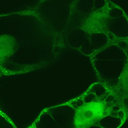A novel xylogenic suspension culture model for exploring lignification in Phyllostachys bamboo.
Paraules clau
Resum
BACKGROUND
Some prominent cultured plant cell lines, such as the BY-2 cell line of tobacco (Nicotiana tabacum cv. 'Bright Yellow 2') and the T87 cell line of Arabidopsis (Arabidopsis thaliana L. Heynh., ecotype Columbia) are used as model plant cells. These suspension cell culture systems are highly applicable for investigating various aspects of plant cell biology. However, no such prominent cultured cell lines exist in bamboo species.
RESULTS
We standardized a novel xylogenic suspension culture model in order to unveil the process of lignification in living bamboo cells. Initial signs of lignin deposition were able to be observed by a positive phloroglucinol-HCl reaction at day 3 to 5 under lignification conditions (LG), i.e., modified half-strength Murashige and Skoog medium (m1/2MS) containing 10 μM 6-benzyladenine (BA) and 3% sucrose. Two types of xylogenic differentiation, both fiber-like elements (FLEs) with cell wall thickening and tracheary elements (TEs) with formation of perforations in the cell wall, were observed under these conditions. The suspension cells rapidly formed secondary cell wall components that were highly lignified, making up approximately 25% of the cells on a dry weight basis within 2 weeks. Detailed features involved in cell growth, differentiation and death during lignification were characterized by laser scanning microscopic imaging. Changes in transcript levels of xylogenesis-related genes were assessed by RT-PCR, which showed that the transcription of key genes like PAL1, C4H, CCoAOMT, and CCR was induced at day 4 under LG conditions. Furthermore, interunit linkage of lignins was compared between mature bamboo culms and xylogenic suspension cells by heteronuclear single quantum coherence (HSQC) NMR spectroscopy. The presence of the most common interunit linkages, including β-aryl ether (β-O-4), phenylcoumaran (β-5) and resinol (β-β) structures was identified in the bamboo cultured cell lignin (BCCL) by HSQC NMR. In addition to these common features of lignin, several differences in lignin substructures were also found between the BCCL and the bamboo milled wood lignin (BMWL).
CONCLUSIONS
Our xylogenic suspension culture model could be used for detailed characterization of physiological and molecular biological events in living bamboo cells.


